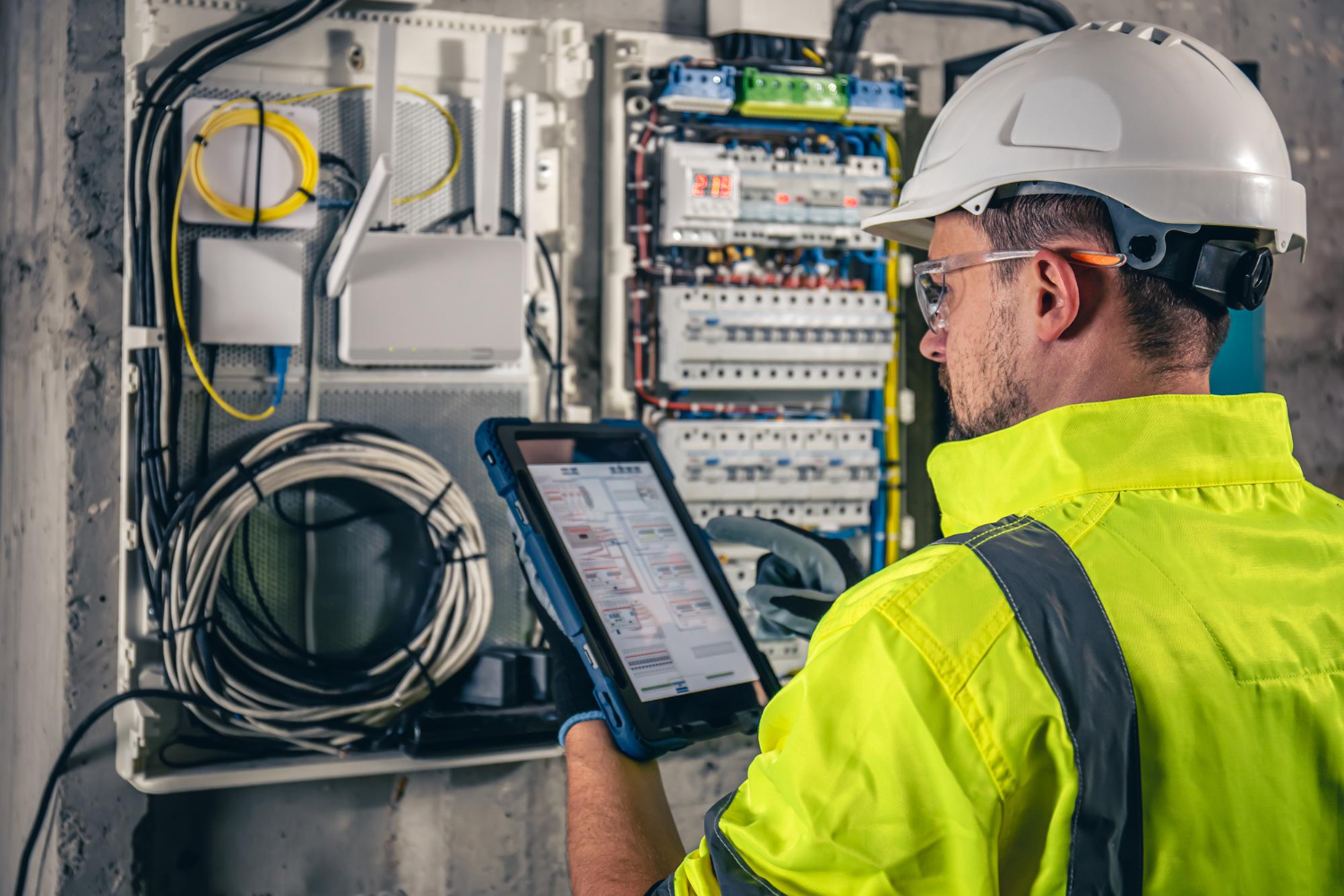In an era of smart homes, IoT-enabled devices, and growing demands on electrical infrastructure, traditional safety equipment is evolving too. One of the most promising innovations in electrical protection is the Smart RCCB (Residual Current Circuit Breaker). In this article, we’ll explore what makes smart RCCBs different, why they matter, and how they are shaping the future of safety and monitoring. Finally, we’ll also highlight BCH Electric as a top RCCB manufacturer in India.
1. What is a Smart RCCB?
A conventional RCCB (or RCD) is a protective device that senses leakage current (i.e. imbalance between live and neutral) and disconnects the circuit if it exceeds a threshold, thereby preventing electric shock or fire. Its operation is mechanical or electromechanical, without remote visibility.
A Smart RCCB adds intelligence and connectivity: sensors, microcontrollers, communications modules (e.g. WiFi, LoRa, Zigbee, Ethernet, or PLC), and software interfaces for monitoring, diagnostics, alerts, and sometimes remote control. In short, it transforms a passive protective device into an active, networked component in the electrical system.
Core capabilities of smart RCCBs may include:
|
Capability |
Description |
|---|---|
|
Real-time monitoring |
Observe leakage currents, power usage, and health status continuously |
|
Alerting & notifications |
Get alarms or push notifications on abnormal leakage, high currents, device aging |
|
Remote control / switching |
Ability to trip/reset remotely (subject to safety and regulatory concerns) |
|
Self-diagnostics |
Built-in checks, trend analysis, predictive failure warnings |
|
Integration |
Connect with building management systems, energy management, smart home platforms |
|
Historical data & reporting |
Logging leakage events over time, generating retention reports |
Thus, a smart RCCB is no longer just a “trip and forget” device — it becomes part of the intelligent infrastructure.
2. Why Smart RCCBs Matter — Benefits and Drivers
2.1 Enhanced Safety & Faster Response
A conventional RCCB only notifies you after a leakage becomes significant (i.e. it trips). But smart monitoring allows detection of incipient leakage trends before they cross the threshold. This gives you early warning of deteriorating insulation, moisture ingress, or insulation breakdown — allowing preemptive maintenance rather than waiting for failure or hazard.
2.2 Reduced Downtime and Maintenance Costs
In industrial or commercial settings, a nuisance trip is expensive — downtime, product loss, labor. Smart RCCBs can offer event logs that help identify why a trip happened (e.g. persistent leakage on a particular circuit, transient spikes) and help technicians more quickly isolate and fix the root cause.
Trend analysis also allows predictive maintenance rather than reactive — replacing or servicing RCCBs nearing end-of-life before catastrophic failure.
2.3 Integration with Building/Factory Automation
Smart RCCBs can feed data into a central building management system (BMS), SCADA, or energy management platform. In smart buildings, you can correlate leakage or abnormal behavior with environmental sensors (humidity, temperature) or usage patterns. Alerts and automated actions can be triggered (e.g. isolate a zone, shut down noncritical loads) without manual intervention.
2.4 Energy and Safety Compliance
Regulations and insurance standards increasingly favor or require more active monitoring in sensitive installations (data centers, hospitals, labs). Smart RCCBs provide audit trails, event histories, and compliance data that may be required in safety audits.
2.5 Scalability & Future-proofing
As buildings are upgraded — photovoltaics, electric vehicle (EV) charging, battery storage, variable frequency drives (VFDs), IoT loads — leakage behavior can change. A smart RCCB can adapt to evolving load profiles, detect new leakage modes (e.g. high-frequency or DC leakage in renewables), and remain relevant in modern systems.
3. Technical Challenges & Considerations
While smart RCCBs bring many advantages, there are also important technical, regulatory, and safety challenges.
3.1 Safety & Fail-Safe Design
Any remote control (trip/reset) must not compromise the inherent safety. Fail-safe defaults are essential (e.g. local manual override). Communications failures, cybersecurity attacks, or software bugs must not disable core protection.
3.2 Communications & Networking
Robust, reliable connectivity in harsh electrical environments is a challenge. Noise, electromagnetic interference, and network isolation (galvanic isolation) must be managed. Selection of communication protocol (wired, wireless, PLC) has tradeoffs in latency, reliability, and cost.
3.3 Power & Consumption
The added electronics inside a smart RCCB consume some power, and need auxiliary supply or energy harvesting. Minimizing overhead is critical to avoid impacting the circuit.
3.4 False Alarms & Nuisance Tripping
Because more sensitivity and monitoring are involved, design must balance between being responsive to small anomalies and avoiding false alarms. Smart filtering, thresholds, and algorithms are needed.
3.5 Standards, Certification & Interoperability
Standards are evolving. Ensuring smart RCCBs comply with IEC (e.g. IEC 61008 / 61009 series), local electrical codes, EMC, and safety certifications is essential. Interoperability with other systems (BMS, IoT protocols) is also a key concern.
3.6 Cost & Return on Investment
Smart RCCBs are more expensive than conventional ones. The payback must come via reduced maintenance, fewer failures, improved safety, or energy savings. This value case must be clear to adopters.
4. Use Cases & Applications
Smart RCCBs find value across various sectors:
-
Industrial plants: Early detection of insulation degradation in machinery, motors, or cable runs. Integration with plant SCADA.
-
Commercial buildings / malls / offices: Zone-based leakage detection, alerting facility teams before outages.
-
Data centers / server rooms: High reliability, tight monitoring, fault isolation.
-
Hospitals & laboratories: Sensitive environments where power disruption or leakage must be tightly controlled.
-
Renewable & hybrid systems: Incorporating smart RCCBs that detect DC or high-frequency leakage in PV, battery, inverter systems.
-
Smart homes / IoT-enabled dwellings: Home automation integration, user alerts (via mobile apps), remote monitoring for maintenance.
5. Outlook & Market Trends
-
The global smart circuit breaker / smart electrical protection market is seeing strong growth, driven by smart homes, building automation, and stricter safety regulation.
-
Manufacturers are investing in hybrid devices (smart RCCB + MCB + surge protection + monitoring) to consolidate components.
-
Use of AI/ML in anomaly detection and predictive diagnostics is increasing.
-
Edge computing (doing analytics locally in the breaker) helps reduce latency and network dependency.
-
Regulations may evolve to mandate active leakage monitoring in certain critical installations.
In short, smart RCCBs are poised to become a standard rather than a niche — especially in high-reliability or safety-critical systems.
BCH Electric — A Leading RCCB Manufacturer in India
When discussing RCCBs in India, one name that frequently comes up is BCH Electric Limited. Below is a snapshot of BCH and why many consider them among the best manufacturers in this space.
About BCH Electric
-
BCH Electric Limited is a well-established Indian company, headquartered in New Delhi, which manufactures a wide range of low-voltage switchgear and protective devices including RCCBs.
-
Their product line includes residual current circuit breakers with various ratings (2-pole, 4-pole) and sensitivities (e.g. 30 mA) conforming to standards like IS 12640, IEC/EN 61008 series.
-
For example, a four-pole, 63 A, 30 mA RCCB from BCH is marketed under the model BCHRCB030FPC63 with 6 kA short-circuit capacity and IP20 enclosure.
-
In profiles and industry lists of RCCB manufacturers in India, BCH is routinely included as a reliable domestic manufacturer.
Why BCH Electric Stands Out (from publicly available sources)
From available public information, BCH Electric offers several competitive advantages:
-
Domestic Manufacturing & Supply Chain Strength
Because they manufacture in India, BCH can better respond to local market needs, inventory, support, and cost pressures. -
Regulatory & Standards Compliance
Their products claim adherence to Indian standards (IS) and international norms, which is essential in protective gear. -
Product Portfolio & Range
They offer RCCBs across a variety of configurations (2-pole, 4-pole, rated currents up to 63 A, leakage sensitivities such as 30 mA) to suit residential, commercial, and industrial needs. -
Reputation & Trust
In comparative listings of trusted RCCB manufacturers, BCH is highlighted as a reliable Indian brand. -
Accessibility & Distribution
BCH RCCBs are sold across India via electrical distributors and appear in marketplaces (e.g. JustDial listings) in various cities, indicating wide reach.
Strategic Position — Smart RCCBs & Future Opportunities
As the smart protection trend accelerates, BCH has the opportunity to expand into smart / IoT-enabled RCCBs — devices that retain core protection but offer telemetric insights, diagnostics, and integration. Given their manufacturing base and market presence, BCH is well-placed to lead India’s transition toward intelligent electrical safety infrastructure.
If they invest in R&D for smart RCCBs (embedding microcontrollers, communications, data analytics) while maintaining safety and reliability, they could emerge as the go-to domestic brand for modern protection systems.


